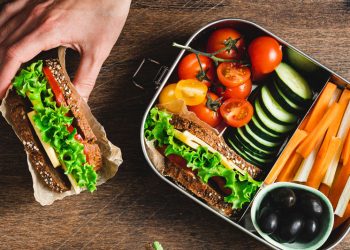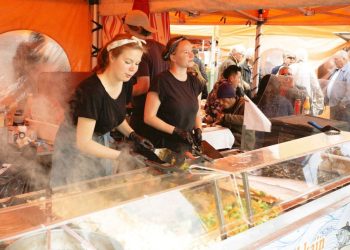Investing in the perfect kitchen equipment for your restaurant is one of the most important decisions you’ll make as a restaurateur. The right equipment can help you to cook, store, and serve food more efficiently, saving time and money. But with so many different types of kitchen equipment on the market, it can be overwhelming to know where to start. In this blog post, we’ll give you some tips on how to invest in the perfect kitchen equipment for your restaurant, ensuring you get the biggest bang for your buck. Whether you’re opening a new restaurant or looking to upgrade your existing kitchen, this guide is sure to help you make the best selection for your business’s needs.
1. The Importance of Selecting the Right Kitchen Equipment for Your Restaurant
Selecting the right kitchen equipment for a restaurant is crucial to its success. Before purchasing any equipment, it’s important to make a list of all the necessary supplies and consider the needs of the business. Whether it’s a bakery or grill restaurant, choosing the right equipment can make all the difference. Using commercial-grade equipment offers numerous advantages over residential equipment, such as higher quality and durability. However, budget considerations should also be taken into account when purchasing new or used commercial cooking equipment. Investing in energy-efficient equipment can save thousands in the long run. Avoiding errors and taking the time to choose the right supplies is essential for a smooth operation in the kitchen. Overall, selecting the right kitchen equipment is an important investment for any restaurant owner or chef.
2. Tips for Choosing Between Old and New Equipment
When it comes to choosing restaurant kitchen equipment, one major decision to make is whether to purchase old or new equipment. While cost may be a deciding factor, it’s important to consider the long-term benefits and drawbacks of each option. New equipment usually comes with warranties and up-to-date features, but may come at a higher price. Meanwhile, purchasing used equipment can save money upfront, but may require more maintenance and repairs. It’s also important to ensure that used equipment meets current safety and health codes. Ultimately, the decision between old and new equipment should depend on the specific needs and budget of the restaurant, as well as the level of maintenance and support the restaurant is willing to provide.
3. Budget Considerations for Startup Restaurant Businesses
When starting a new restaurant, budget is a major consideration when it comes to selecting kitchen equipment. It’s important to not overspend on equipment that may not be necessary and to balance cost with functionality. Choosing between new and used equipment is also an important consideration. While used commercial catering equipment may be more affordable, it may also require more maintenance and repairs, ultimately costing more in the long run. Investing in commercial-grade equipment may seem expensive, but it often pays off in the long run with increased efficiency and durability. It’s also important to consider the type of restaurant and the specific equipment needed for a bakery versus a grill restaurant, for example. Overall, budget considerations should be carefully weighed against the benefits and long-term costs of the equipment in order to make informed decisions for the success of the restaurant.
5. The Benefits of Investing in Commercial-Grade Equipment
Investing in commercial-grade equipment is a smart move for any restaurant owner. While the cost may be higher upfront, the benefits far outweigh the expenses in the long run. Commercial-grade equipment is built to withstand the everyday wear and tear of a busy kitchen, and it is designed to handle high volume cooking. This means that the equipment will last longer and require fewer repairs or replacements over time, ultimately saving money in the long run. Additionally, commercial-grade equipment is generally more efficient in terms of energy usage, which can lead to lower utility bills. Choosing the right equipment for a restaurant is critical and investing in commercial-grade equipment ensures that the restaurant is equipped for success.
6. The Risks of Using Residential Equipment in a Commercial Kitchen
Using residential equipment in a commercial kitchen is a risky proposition. Residential appliances are not designed to handle the demands of a commercial kitchen, and they may break down or malfunction during peak periods, disrupting the workflow and resulting in lost revenue. Plus, residential equipment may not meet commercial health and safety standards, exposing customers to potential hazards and causing compliance issues. It’s important to invest in commercial-grade equipment that is designed to withstand the rigors of a commercial kitchen and is equipped with the necessary safety features. Saving money upfront on residential equipment could end up costing more in the long run.
8. Factors to Consider When Choosing Equipment for a Bakery vs a Grill Restaurant
When it comes to choosing restaurant equipment for a bakery versus a grill restaurant, there are various factors to consider. For a bakery, you would need equipment such as a commercial mixer, oven, proofing cabinets, and pastry display cases. On the other hand, a grill restaurant would require a commercial grill, fryer, range, and commercial refrigeration units. It’s important to keep in mind the specific needs of your business when selecting equipment. Another consideration is the amount of space available in your kitchen, as different types of equipment may require varying amounts of space. Additionally, the budget should be taken into account when selecting equipment, as commercial-grade equipment can be more expensive. By carefully considering these factors, you can choose the right equipment that will support your bakery or grill restaurant’s success.
10. Setting Your Kitchen Up for Success with Convection Ovens and Other Essential Equipment.
Setting up a restaurant kitchen with essential equipment is crucial for success. One of the most important pieces of equipment to invest in is a convection oven. Unlike traditional ovens, convection ovens have a fan that circulates hot air, producing more even and faster cooking. Along with a convection oven, other essential kitchen equipment includes refrigerators, freezers, ranges, grills, fryers, and prep tables. It’s crucial to choose the right equipment for your restaurant’s menu and budget, as well as to invest in commercial-grade equipment that meets safety standards. Choosing between old and new equipment should be done carefully, as old equipment could have maintenance issues, whereas new equipment might come with a higher price tag. By carefully considering all these factors and investing in the perfect kitchen equipment, your restaurant will be set up for success.























